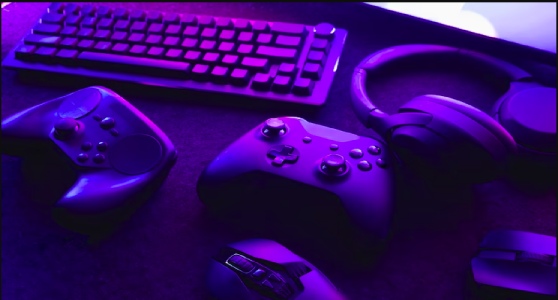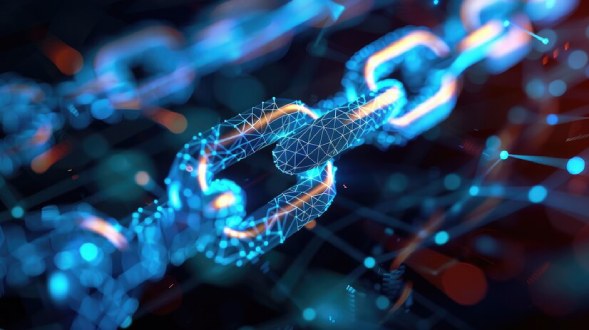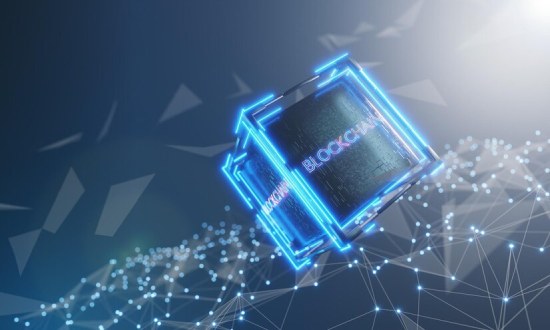-
The intersection of blockchain technology and interactive entertainment has paved the way for a revolutionary era in game development. Non-fungible tokens (NFTs) have emerged as a transformative technology, enabling unique digital asset ownership, creating new monetization opportunities, and redefining player engagement. This comprehensive guide will explore everything you need to know about NFT game development with NFTs, from the foundational concepts to the technical intricacies and future trends. Whether you are a game developer, blockchain entrepreneur, or business executive, this blog offers valuable insights into integrating NFTs into your gaming projects.
Introduction
The gaming industry has long been a hotspot for innovation, continually pushing the boundaries of interactive technology and user engagement. In recent years, NFTs have captured significant attention by offering verifiable ownership of digital assets. Unlike traditional digital items, NFTs are unique, decentralized, and stored on the blockchain, allowing gamers to truly own, trade, or sell in-game items. As NFT-based games gain popularity, businesses and developers are exploring how to harness this technology to create immersive experiences and robust revenue streams.
In this blog, we delve deep into the key concepts, benefits, technical considerations, challenges, and future trends surrounding NFT game development. We aim to equip B2B decision-makers and technical teams with the essential knowledge to navigate this rapidly evolving landscape.
Also, Read | How to Develop an NFT Game Like Zed Run | A Step-by-Step Guide
Understanding NFTs in the Gaming Industry
What Are NFTs?
Non-fungible tokens (NFTs) are digital assets that represent unique items on a blockchain. Unlike cryptocurrencies such as Bitcoin or Ethereum, which are fungible (each unit is interchangeable), NFTs are distinct and cannot be replaced with another token of equal value. This uniqueness makes them ideal for representing rare in-game items, collectibles, artwork, virtual real estate, and more.
Why NFTs Matter in Gaming
NFTs introduce a paradigm shift in game development by:
- Providing True Digital Ownership: Players can own unique in-game assets that they can trade, sell, or even use across multiple platforms.
- Enabling a Play-to-Earn Model: Players can earn income by participating in games, contributing to the ecosystem, or trading valuable assets.
- Fostering an Engaged Community: The sense of ownership and potential investment in in-game assets drives player loyalty and community engagement.
By integrating NFTs, game developers can create ecosystems where players have tangible stakes in the game's economy, encouraging deeper interaction and long-term retention.
Also, Check | Play-to-Earn NFT Games | Driving the GameFI Revolution
The Benefits of NFT Integration in Game Development
Monetization Opportunities
NFTs open up several revenue streams for game developers:
- In-Game Asset Sales: Unique items, skins, weapons, or characters can be sold as NFTs, generating direct revenue.
- Secondary Market Royalties: Smart contracts can be programmed to provide creators with royalties every time an NFT is resold.
- Play-to-Earn Economies: Empowering players to earn through gameplay creates a dynamic ecosystem where in-game activities translate into real-world value.
Enhanced Player Experience
NFTs add an extra layer of engagement by:
- Providing Verifiable Scarcity: Limited-edition NFTs can drive demand, as players value the rarity and uniqueness of their digital assets.
- Promoting Interoperability: NFTs can be designed to work across multiple games or platforms, giving players more freedom and utility.
- Building a Community: The shared ownership of assets fosters a sense of belonging, encouraging community-driven development and feedback loops.
Strategic Business Advantages
For B2B stakeholders, NFT integration can:
- Differentiate Your Product: Stand out in a crowded market by offering innovative NFT features.
- Attract Investment: The intersection of blockchain and gaming is attracting significant venture capital, providing opportunities for strategic partnerships.
- Drive Long-Term Engagement: With built-in economic incentives, players are more likely to invest time and money in your game ecosystem.
Also, Discover | How To Create a Daily Game Reward System in Solidity
Technical Aspects of NFT Game Development
Developing a game with NFT integration involves a careful blend of blockchain technology, game design, and smart contract development. Here are the core technical components:
Blockchain Integration
Blockchain serves as the backbone for NFT transactions, providing a decentralized ledger that records asset ownership and transaction history.
- Choosing the Right Blockchain: Selecting the optimal blockchain platform is crucial. Ethereum is the most widely used network for NFTs, but alternatives like Binance Smart Chain, Flow, and Polygon offer scalability and lower transaction fees.
- Scalability Considerations: As game interactions increase, ensuring the blockchain can handle high volumes of transactions without significant latency or cost increases is essential.
- Interoperability: Future-proofing your game may require interoperability between different blockchain networks, allowing assets to move seamlessly across ecosystems.
Smart Contracts and NFT Standards
Smart contracts are self-executing contracts with the terms of the agreement directly written into code. They play a critical role in NFT game development.
- NFT Standards: Familiarize yourself with popular standards such as ERC-721 for single-instance NFTs and ERC-1155 for multi-token standards. These protocols ensure compatibility and interoperability within the blockchain ecosystem.
- Contract Security: Smart contracts must be rigorously tested and audited to prevent vulnerabilities. Security flaws can lead to asset theft or unintended behaviors.
- Automated Royalty Payments: Integrating automated royalty mechanisms within smart contracts allows creators to earn from secondary market sales without ongoing administrative oversight.
Game Engine Integration
Integrating blockchain functionality with your game engine is a critical step. Most modern game engines offer support or third-party plugins for blockchain connectivity.
- Unity and Unreal Engine: Both platforms now support blockchain integration, with SDKs available to help developers interact with blockchain networks and manage NFT transactions.
- APIs and Middleware: Utilize APIs and middleware solutions to bridge the gap between the game and blockchain. These tools can handle wallet integration, asset management, and transaction processing.
- User Interface Design: Creating a seamless user experience requires designing intuitive interfaces that abstract the complexities of blockchain transactions. Ensure that players can easily view, trade, and manage their NFTs without needing in-depth technical knowledge.
Also, Explore | Game Development with Blockchain, NFT, and the Metaverse
Challenges in NFT Game Development
While NFTs offer tremendous potential, developers must navigate several challenges to ensure successful integration:
Scalability and Transaction Costs
- High Gas Fees: On networks like Ethereum, gas fees can be prohibitive, especially during times of high network congestion. This can limit microtransactions and impact player experience.
- Network Congestion: High volumes of transactions can slow down the network, leading to delays in NFT transfers and gameplay interruptions.
- Mitigation Strategies: Explore layer-2 solutions and alternative blockchains to alleviate scalability issues and reduce transaction costs.
Regulatory and Legal Considerations
- Intellectual Property Rights: Defining ownership and licensing rights for digital assets is complex. Developers must clearly outline what owning an NFT means in the context of the game.
- Consumer Protection: Regulations around digital assets and cryptocurrencies are still evolving. Ensuring compliance with local and international laws is critical.
- Tax Implications: Both players and developers need to be aware of the tax implications of NFT transactions, which can vary significantly by jurisdiction.
Security and Fraud Prevention
- Smart Contract Vulnerabilities: Flaws in smart contract code can lead to exploits. Rigorous testing and third-party audits are essential.
- Phishing and Scams: As NFT transactions involve real economic value, they are a target for scammers. Educating users and implementing robust security protocols is crucial.
- Data Privacy: Blockchain's immutable nature requires careful handling of personal data to comply with privacy regulations like GDPR.
User Experience and Adoption
- Onboarding Complexity: Many players are unfamiliar with blockchain technology and digital wallets. Simplifying the onboarding process is key to widespread adoption.
- Transaction Delays: Blockchain transactions are inherently slower than traditional in-game transactions. Managing user expectations and incorporating offline functionalities can help mitigate frustration.
- Educational Resources: Providing clear documentation, tutorials, and customer support will help users understand the benefits and functionalities of NFTs within your game.
You may also like | How to Develop Play-to-Earn Game in Sandbox
Best Practices for NFT Game Development
To successfully integrate NFTs into your game, consider these best practices:
1. Choose the Right Blockchain Platform
Evaluate factors such as transaction speed, fees, security, and developer community support. Ethereum remains popular, but alternatives like Polygon or Flow may offer more efficient solutions for gaming applications.
2. Prioritize User Experience
- Simplify Wallet Integration: Streamline the process for creating and managing digital wallets.
- Transparent Transactions: Ensure that players have clear visibility into NFT ownership and transaction history.
- User-Friendly Interfaces: Develop intuitive UIs that hide the complexity of blockchain operations, making the experience accessible to non-technical users.
3. Implement Robust Security Measures
- Smart Contract Audits: Regularly audit your smart contracts to identify and fix vulnerabilities.
- Data Encryption: Employ advanced encryption techniques to safeguard user data and transaction details.
- Fraud Detection Systems: Integrate fraud detection and prevention mechanisms to protect your ecosystem from malicious activities.
4. Foster Community Engagement
- Regular Updates: Keep your community informed about upcoming features, changes, and NFT drops.
- Incentive Programs: Reward loyal players with exclusive NFTs, in-game currency, or other benefits.
- Feedback Loops: Encourage player feedback and iterate on your game based on community suggestions.
5. Plan for Scalability
- Layer-2 Solutions: Consider incorporating layer-2 protocols or sidechains to handle high transaction volumes.
- Modular Architecture: Design your game architecture to allow for future expansions and cross-chain integrations.
Future Trends in NFT Gaming
The NFT gaming landscape is dynamic and continues to evolve. Here are some emerging trends to watch:
Interoperability and Cross-Platform Integration
Future NFT systems may allow assets to be used across multiple games or even different platforms, fostering a more connected gaming ecosystem. This cross-platform integration can enable players to transfer their hard-earned assets seamlessly between different virtual worlds.
Play-to-Earn (P2E) Economies
Play-to-earn models are rapidly gaining traction, especially in emerging markets. By rewarding players with NFT assets or cryptocurrency for gameplay, developers can create engaging economic ecosystems that encourage long-term player investment and participation.
Metaverse Integration
As the concept of the metaverse evolves, NFTs will play a central role in creating persistent, interconnected virtual worlds. Game developers are already exploring how NFT ownership can translate into real-world benefits in virtual environments, from exclusive events to virtual real estate.
Enhanced In-Game Economies
With blockchain technology, in-game economies become more transparent and robust. Smart contracts can automatically adjust supply and demand dynamics, while secondary markets can provide ongoing revenue for both developers and players.
Increased Regulatory Clarity
As the market matures, regulatory frameworks are expected to evolve, offering clearer guidelines for digital asset ownership, taxation, and consumer protection. This clarity will likely encourage more traditional businesses to explore NFT integration.
Case Studies and Success Stories
Examining successful NFT game projects can provide valuable insights into best practices and potential pitfalls. Consider the following examples:
Axie Infinity
One of the pioneers in NFT gaming, Axie Infinity leverages NFTs to represent digital pets known as Axies. Players breed, battle, and trade these unique creatures, creating a vibrant play-to-earn ecosystem. Axie Infinity's success highlights how community engagement and a robust in-game economy can drive widespread adoption.
Decentraland
Decentraland is a virtual world where users can buy, sell, and develop parcels of virtual real estate as NFTs. The project demonstrates the potential for NFTs to enable interoperability and foster entirely new forms of digital interaction and commerce.
The Sandbox
The Sandbox offers a user-generated gaming platform where players create, share, and monetize their gaming experiences. By leveraging NFTs for in-game assets, The Sandbox has created a dynamic marketplace that empowers both creators and players, driving innovation within the metaverse.
You might be interested in | GameFi | The Next Big Thing in the Crypto Space
Conclusion
NFTs represent a groundbreaking opportunity for the gaming industry, merging the worlds of blockchain technology and interactive entertainment. For businesses and developers, the integration of NFTs offers a unique chance to drive innovation, enhance user engagement, and unlock new revenue streams. However, realizing this potential requires a deep understanding of blockchain fundamentals, robust technical implementation, and a commitment to creating user-friendly experiences.
By carefully navigating the challenges of scalability, security, and regulatory compliance, developers can harness the full power of NFTs. The future of NFT gaming is bright, with trends such as cross-platform interoperability, play-to-earn models, and metaverse integration promising to redefine the boundaries of digital interaction. Embracing these trends not only sets the stage for technical innovation but also paves the way for more vibrant, player-centric game ecosystems.
Whether you are an established game developer or a new entrant in the industry, staying informed and adaptable will be key to leveraging NFTs effectively. As the market evolves, continuous learning, community engagement, and iterative development will ensure that your NFT game projects remain at the forefront of this digital revolution.
Frequently Asked Questions (FAQ)
1. What exactly is an NFT, and how does it work in games?
An NFT (non-fungible token) is a unique digital asset stored on a blockchain. In games, NFTs can represent items like characters, skins, weapons, or virtual real estate. The blockchain verifies ownership and authenticity, allowing players to trade or sell these assets independently of the game's central authority.
2. How do NFTs benefit game developers and players?
For developers, NFTs open up new monetization channels such as direct asset sales and royalties from secondary market transactions. For players, NFTs offer true digital ownership, allowing them to trade, sell, or use their assets across multiple games or platforms. This creates engaging, dynamic ecosystems that promote player retention and community growth.
3. What blockchain platforms are best suited for NFT game development?
Ethereum is the most popular platform due to its established ecosystem and robust NFT standards (ERC-721 and ERC-1155). However, alternatives like Polygon, Flow, and Binance Smart Chain offer advantages in scalability, lower transaction fees, and faster processing times, making them attractive options for game development.
4. What are some of the challenges developers face when integrating NFTs into games?
Common challenges include scalability issues, high transaction fees (gas fees), ensuring security and preventing smart contract vulnerabilities, regulatory compliance, and creating a seamless user experience. Addressing these challenges requires careful planning, robust technology choices, and ongoing community engagement.
5. How can developers ensure a smooth user experience when incorporating NFTs?
Developers should focus on simplifying wallet integration, creating intuitive interfaces, and providing clear educational resources about blockchain operations. Utilizing layer-2 solutions or alternative blockchains can also help reduce transaction delays and lower fees, enhancing the overall user experience.
6. What future trends should businesses watch in the NFT gaming space?
Key trends include increased interoperability across platforms, the growth of play-to-earn models, the integration of NFTs in metaverse projects, enhanced in-game economies driven by smart contracts, and clearer regulatory frameworks. These developments are expected to drive further innovation and adoption in the NFT gaming sector.
In conclusion, integrating NFTs into game development presents both immense opportunities and significant challenges. With a clear strategy, robust technical planning, and a commitment to enhancing the player experience, businesses can capitalize on the transformative potential of NFTs. As the technology and market continue to evolve, staying informed and agile will be essential for success in this exciting frontier of digital entertainment.
If you are planning to explore the development of games with NFT integration, connect with our blockchain developers to schedule a discussion.

Our Offices
INDIA
Emaar Digital Greens, Sector 61,
Gurugram, Haryana
122011.
Welldone Tech Park,
Sector 48, Sohna road,
Gurugram, Haryana
122018.















